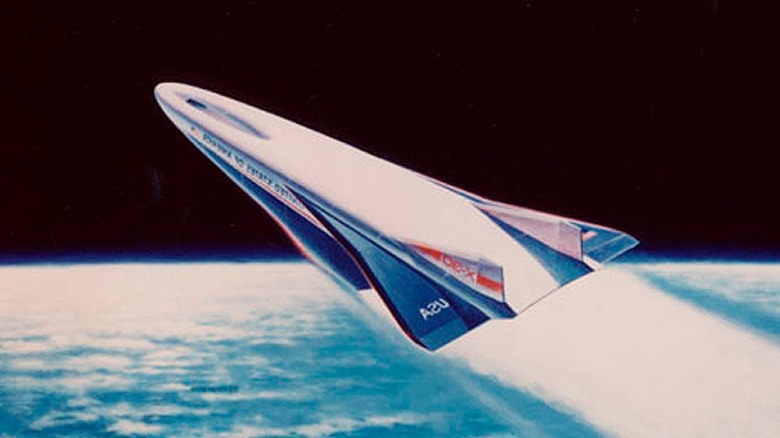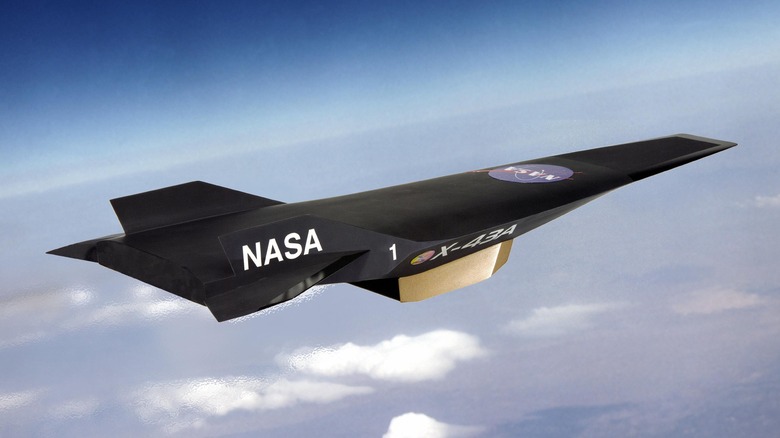Rockwell X-30: The Futuristic Spacecraft Vehicle Expected To Fly At Mach 25
It only takes a glance to discern that the Rockwell X-30 is unlike any aircraft you've seen. Born in the mid-80s as a design project for a National Aerospace Plane (NASP) that was endorsed by President Ronald Reagan, the Rockwell X-30 is a single-stage-to-orbit (SSTO) aircraft that could take off or land horizontally and fly up to Mach 25. If you do the math, traveling at 25 times the speed of sound (over 19,181 mph) is enough to cross Washington to Tokyo in under two hours.
However, the Rockwell X-30 never made it to the prototype stage, despite being a collaborative effort by the Department of Defense, NASA, and other contractors like Rockwell International and General Dynamics. Unfortunately, Congress ended funding in 1994 before NASA and others had a chance to build a full-scale X-30, and the world never got to see the much-awaited successor of the beguiling SR-71 Blackbird.
The potential speeds of scramjet engine technology
Although the Rockwell X-30 was typically a feasibility study, the project enabled NASA to make giant steps in materials and powerplant development. For example, flying at Mach 25 presents significant hurdles like heat management, which led NASA to develop temperature-resistant carbon materials, lightweight titanium/beryllium alloys, and titanium-alloy composites.
Meanwhile, powering the X-30 is a scramjet engine, which is essentially a ramjet that operates at supersonic speeds. Theoretically, a scramjet (supersonic-combustion ramjet) compresses hypersonic airflow and liquid hydrogen in a combustion chamber. Ultimately, NASA built a 1/3 scale demonstrator X-30, which flew in a high-temperature wind tunnel before the funding stopped.
Then again, learnings from developing the Rockwell X-30 made their way to the magnificent X-43A hypersonic aircraft. Unlike the X-30, the X-43A made it to the prototype stage and flew at Mach 6.8 for 11 seconds in March 2004, marking the first time a scramjet aircraft took the skies. NASA built a second X-43A prototype by November 2004, flying at a record-breaking Mach 9.6 (6,800 mph) to set the world airspeed record by an air-breathing powerplant.

